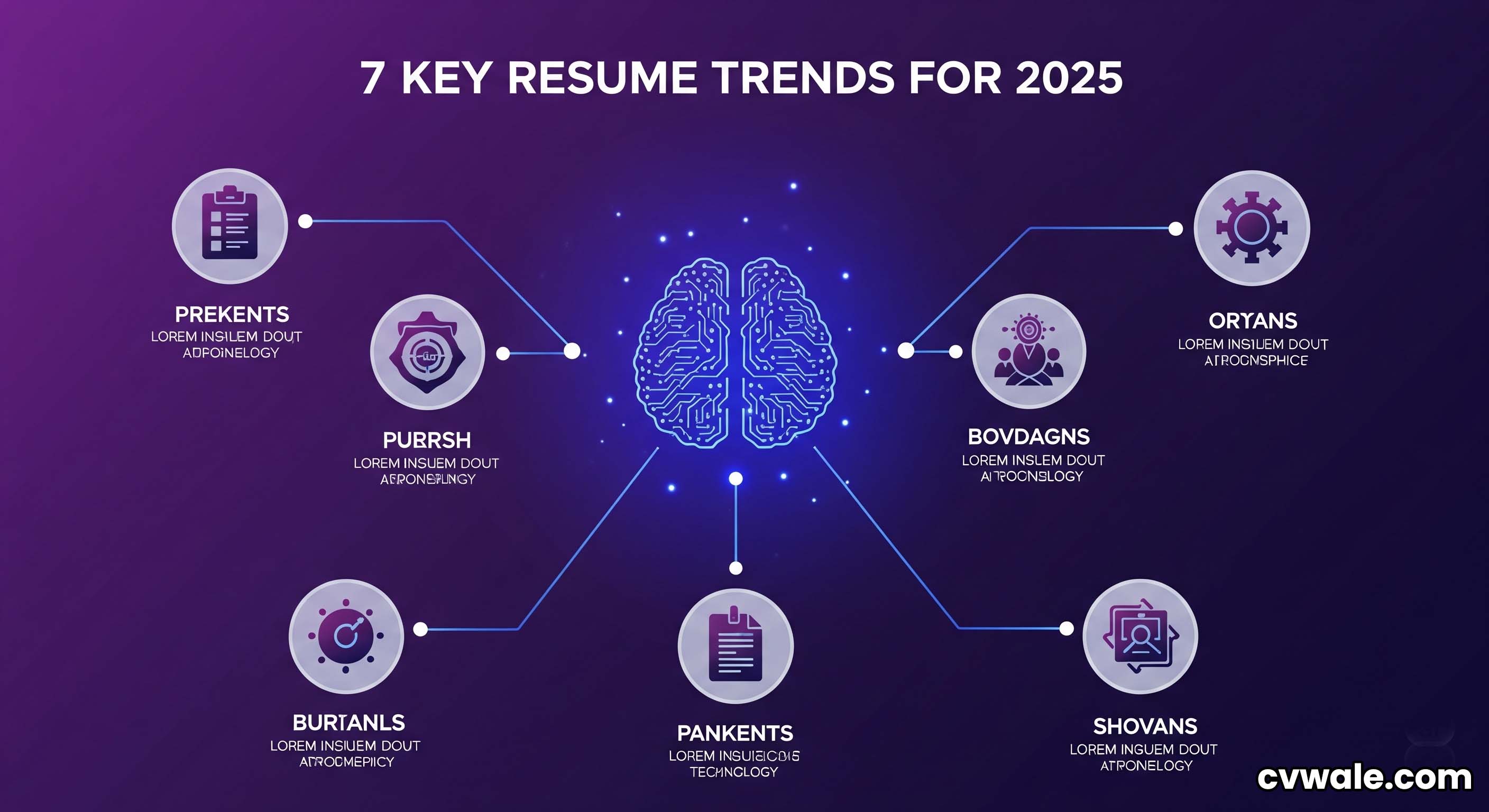7 Resume Trends That Will Dominate 2025 (Is Your CV Outdated?)

The world of work is evolving at an unprecedented pace, and so are the methods recruiters use to find top talent. A resume that was effective just a few years ago might now seem outdated and fail to pass through modern screening systems. To ensure you stand out in the crowded Indian job market of 2025, it's essential to create a forward-thinking CV that aligns with current trends. Is your CV ready for the future? Let's explore the seven key resume trends that are set to dominate and how you can implement them today.
1. The Skills-First Approach
What it is: Instead of burying your skills at the bottom, this approach places a dedicated, prominent "Key Skills" or "Core Competencies" section right at the top of your CV, just below the professional summary.
Why it's important: Recruiters and Applicant Tracking Systems (ATS) are increasingly focused on skills. They want to see, in a matter of seconds, if you possess the required abilities for the job. A skills-first layout makes this incredibly easy.
How to implement it: Create categories within your skills section. For example: "Technical Skills," "Marketing Tools," "Languages," and "Soft Skills." This organized approach is highly effective. Be specific and list the skills mentioned in the job description.
2. Hyper-Personalization and Tailoring
What it is: This goes beyond simply changing the company name. It involves deeply analyzing the job description and the company culture to tailor every section of your resume, from the summary to the experience bullet points.
Why it's important: A hyper-personalized CV shows genuine interest and effort. It tells the employer that you haven't just mass-applied but have taken the time to understand their specific needs.
How to implement it: For every application, create a copy of your master CV and modify it. Mirror the language of the job description. If they ask for a "growth hacker," use that term instead of "digital marketer." If they value "collaboration," mention specific team projects you succeeded in.
3. Quantified, Achievement-Oriented Bullet Points
What it is: Moving away from listing passive duties ("Responsible for...") to showcasing active, measurable achievements ("Achieved X by doing Y, resulting in Z").
Why it's important: Numbers and data provide concrete proof of your impact. They are far more compelling than vague statements and help recruiters visualize the value you can bring to their company.
How to implement it: Review every bullet point under your work experience. Ask yourself: "How can I add a number to this?" Use percentages, monetary figures, timeframes, or scale. For example, instead of "Wrote blog posts," use "Authored 15+ articles on industry topics, increasing monthly blog traffic by 40%."

4. Clean, Minimalist, and ATS-Optimized Design
What it is: A focus on readability and functionality over flashy graphics. This means ample white space, a professional font, a simple color scheme, and a layout that is easily parsed by ATS software.
Why it's important: A clean design makes your CV easy to scan for human eyes. ATS optimization ensures your application passes the initial robotic screening. Complex designs with tables, columns, and graphics can cause the ATS to misread or reject your CV.
How to implement it: Use a tool like CVWale that provides professionally designed, pre-vetted templates. Stick to standard section headings like "Work Experience," "Education," and "Skills."
5. Highlighting Soft Skills with Evidence
What it is: Companies are increasingly realizing that soft skills—like communication, problem-solving, and adaptability—are just as important as technical skills. The trend is to not just list these skills but to provide evidence of them.
Why it's important: Anyone can list "Teamwork" as a skill. Proving it makes you a much more credible candidate.
How to implement it: Weave soft skills into your work experience bullet points. For example, to show "problem-solving," you could write: "Identified a key inefficiency in the workflow and developed a new automated process, saving the team 10 hours per week."
6. Integrating Your Digital Footprint (LinkedIn, Portfolios)
What it is: Including clickable links or even QR codes in your CV that direct recruiters to your professional online profiles.
Why it's important: It provides a richer, more dynamic view of your capabilities than a static PDF ever could. A well-maintained LinkedIn profile or a professional portfolio acts as an extension of your resume.
How to implement it: Ensure your LinkedIn profile is fully updated and professional. Add the URL to your contact information section. If you're in a creative or technical field, link to your online portfolio or GitHub profile.
7. The Rise of the "One-Line" Summary
What it is: While the 3-4 line professional summary is still effective, an even more concise trend is emerging: a powerful, one-line "headline" that sits right under your name.
Why it's important: It's the ultimate elevator pitch, instantly defining who you are and what you do.
How to implement it: Craft a single sentence that encapsulates your professional identity. For example: "Data Scientist specializing in predictive modeling for the e-commerce sector" or "Award-winning graphic designer with a passion for creating user-centric brand identities."
By staying informed and adapting your CV to these modern trends, you significantly increase your chances of getting noticed and landing that coveted interview. The future of job hunting is here, and with the right tools, you can be more than ready for it.
